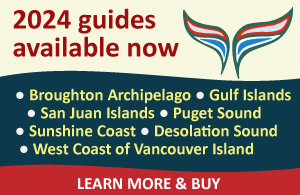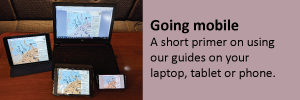The Russell Island howl

Looking across to Salt Spring Island and (right) up into Fulford Harbour.
It was bloodcurding enough to bring me and other boaters up on deck of our boats anchored offshore.
But the tenor of the scream, its piercing shrillness, was familiar to me. Lynne and I had grown accustomed to different variants of the same chord during the last week or so. Grandparenting.
From the bow, I caught sight of Lynne on shore. She waved, granddaughter Daylen in her arms, signaling that everything was okay despite the child’s tears.
I would later learn that little Daylen had been attacked by a clam, which had squirted a torrent of water at her from its hiding place in the sand.
“Granddad,” she would later recount, understandably perplexed. “It spit.”
I might have offered to go over and give the villain a punch in the snout if I wasn’t afraid of clams.
A few low-class invertebrates notwithstanding, Russell Island, near the mouth of Salt Spring Island’s Fulford Harbour, has features that make it an appealing place to visit.

Chartlet from Salish Sea Pilot’s Cruising Guide to the Gulf Islands. Not to be used for navigation.
Russell Island was settled by Hawaiians, who came to British Columbia in the late 18th century, most to work in the fur trade for the Hudson’s Bay Company. Some later chose to remain in the Gulf Islands, many settling on Salt Spring and nearby islands to become part of the Kanaka community, a name Hawaiians call themselves.
The 40-acre island was first settled by William Haumea, a Kanaka settler. He cleared fields, established apple orchards and planted strawberries, but never built a home there as he already had a home on Salt Spring Island.
In 1901, after Haumea died, Maria Mahoi was identified as the heir to the island. She was of Kanaka and First Nations descent, and is believed to have been his daughter.

The original homestead build by Maria Mahoi and her husband, and where they raised 13 children.
By 1906, she and her second husband had built a home on the island and introduced livestock. They raised 13 children, and the island stayed in the family until 1960. In 2009, the island became part of the Gulf Islands National Park.
Today, a trail system encircles the narrow, boomerang-shaped island. Near the middle is the old settlement, with outbuildings and the tiny home that Mahoi and her husband built. During the summer, their descendants serve as island hosts, welcoming visitors to the homestead and answering questions.
The island can be a popular cruising destination in the summer and the best anchorage, off the northwest half of the island, can become congested. It’s fairly exposed, but conditions are typically settled during the peak season.

Time for the daytrippers to go home. Looking out the access ramp to the dinghy dock.
There are reasonable anchoring depths off the northwest shore. If crowded, the urge is to move further east to looser waters along the north shore, but the waters deepen and boats without adequate ground tackle must move closer and closer to shore. Boats will sometimes stern tie, east or west of the dinghy dock.
Ashore there are pit toilets and picnic tables, the sort of place that draws families by the boatload. But watch out for the squirting clams.
(Russel Island is covered in Salish Sea Pilot’s Cruising Guide to the Gulf Islands.)


















